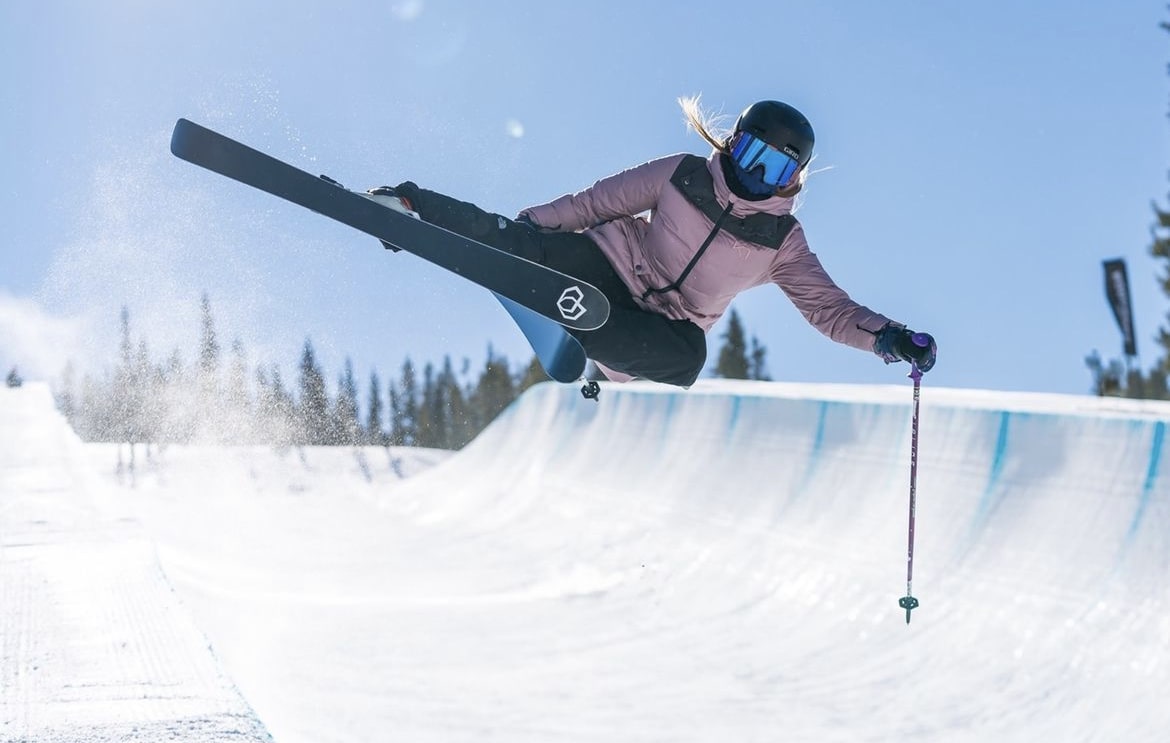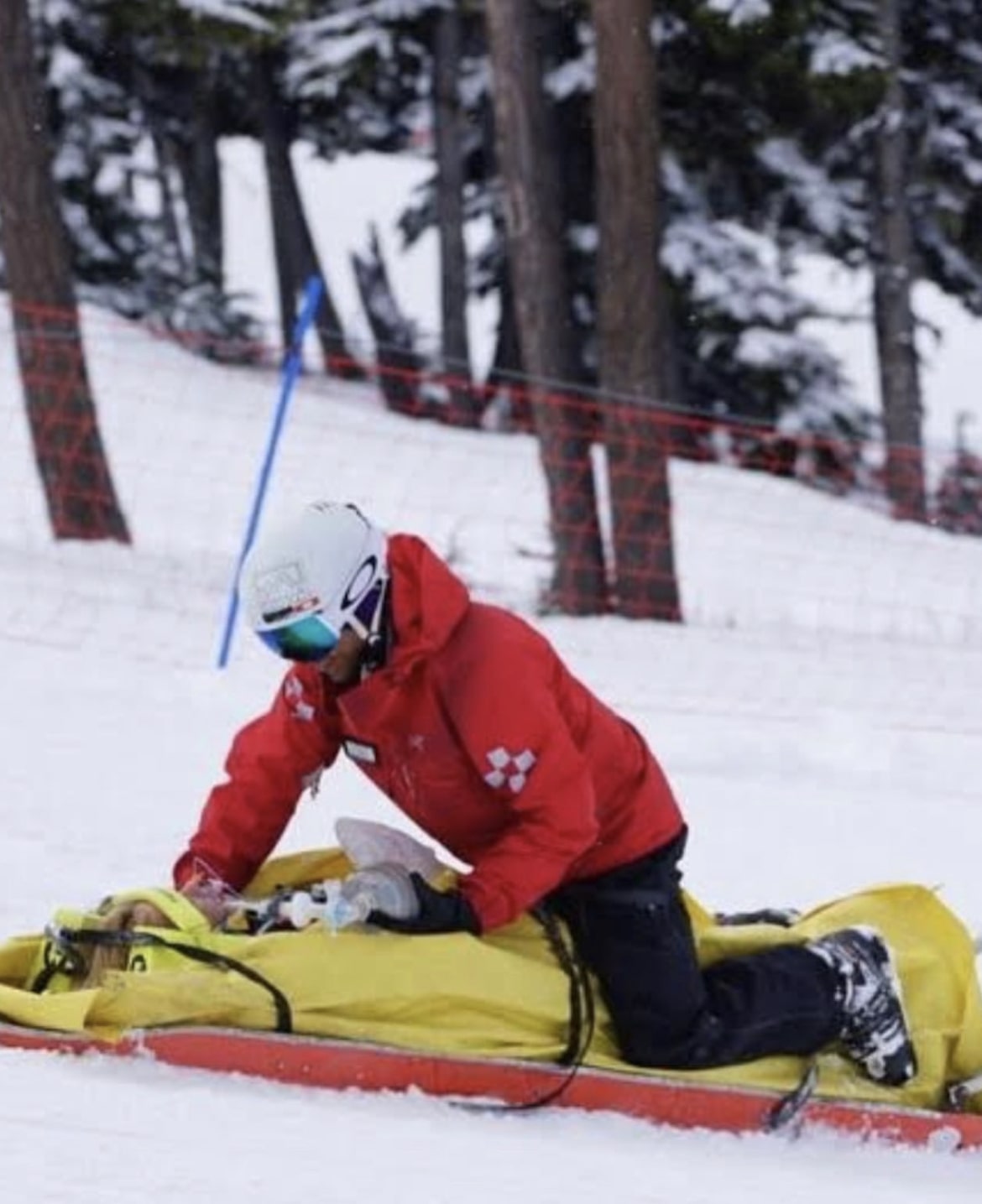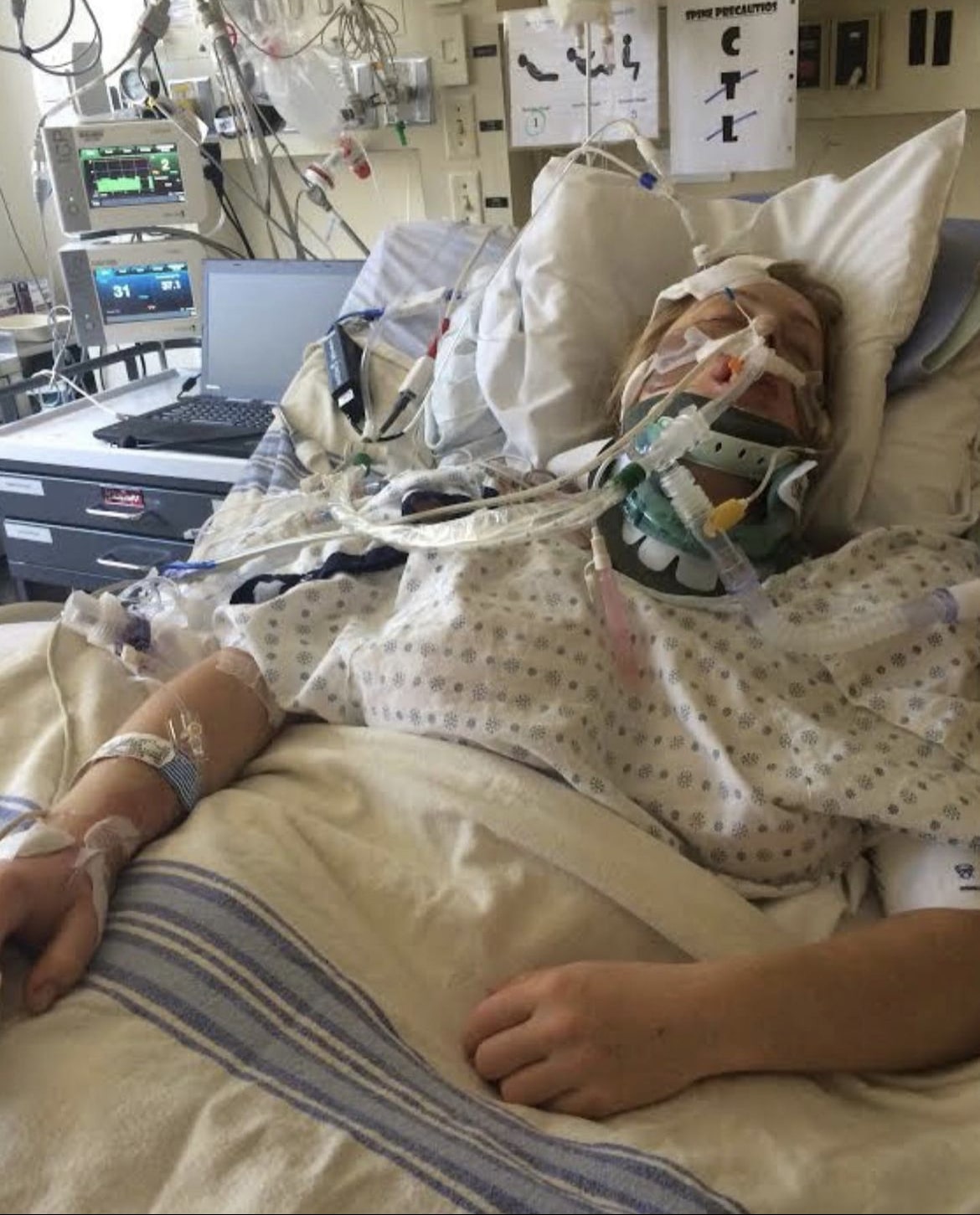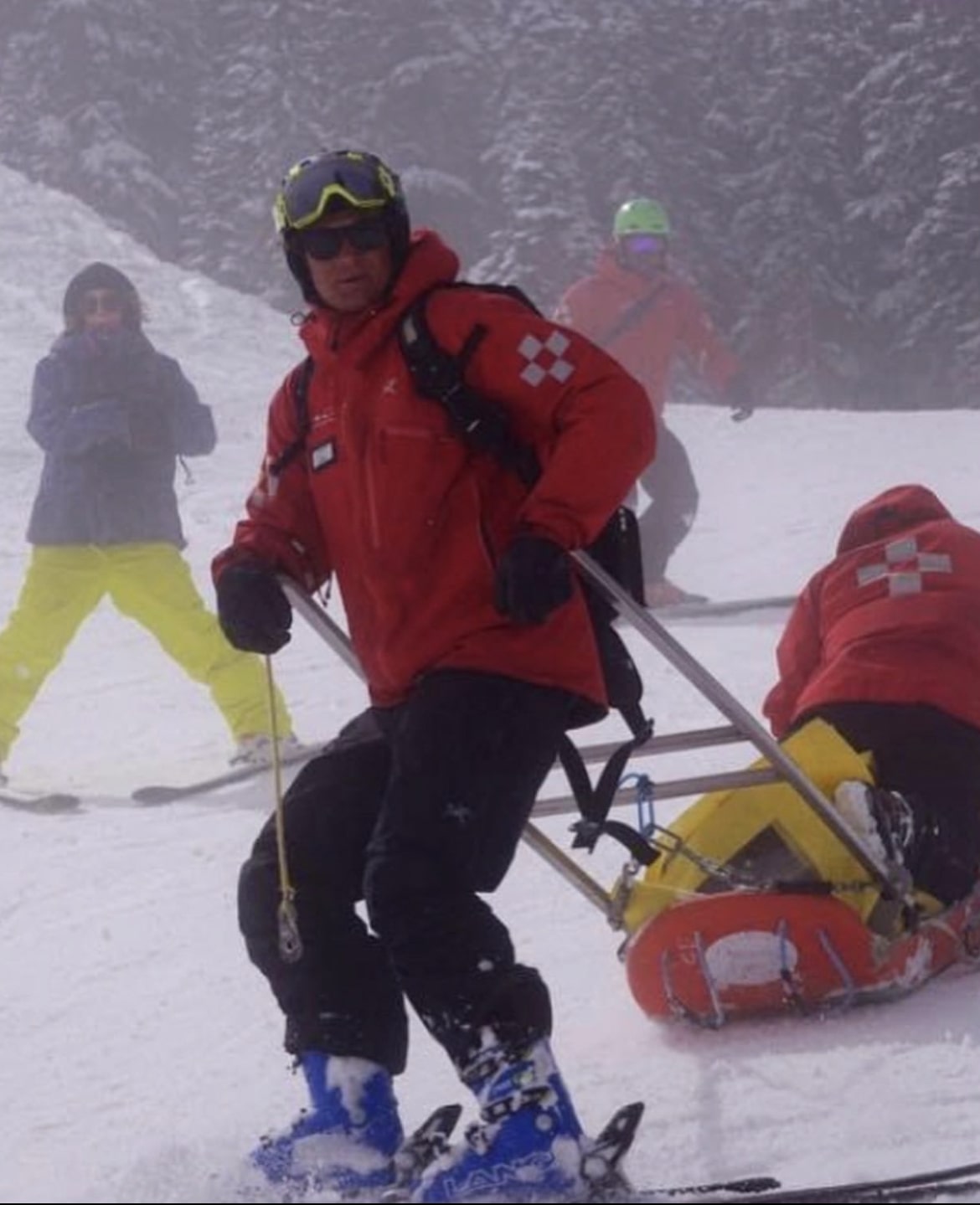
Jamie Crane-Mauzy was at the peak of her skiing career. She had competed across various Freestyle disciplines, from Aerials to Moguls to Slopestyle to Halfpipe and Big Air. It seemed there was nothing the young skier couldn’t do and wouldn’t give a crack, giving her the nickname Jamie MoCrazy. The young Freestyle skier had successfully competed on a national and international level: World Cups, World Championships, and Junior World Championships, even winning Gold at only 18 years of age at the Junior World Championships in New Zealand. She was on the path to going to the Olympics.
Then, when Jamie was at a competition in Whistler, Canada, her life came to a crashing halt. The 22-year-old crashed in a competition that saw her head slammed onto the snow, resulting in a traumatic brain injury ‘TBI’ that saw her in a coma for several days and paralyzed her on one side.

Against all odds, Jamie fully recovered from the TBI and can even ski again, but now dedicates her life to helping others, especially those with brain injuries like her. In her fight for better outcomes for TBI sufferers, Jamie and her sister Jeanee created a documentary to showcase the long hard road ahead for people with brain injuries and the incredible outcomes that can be achieved if you have the opportunity for the proper care. Jamie is fighting to give access to longer rehab to all TBI patients in North America and is taking the matter to Capitol Hill, hoping to change policies to reflect current medical findings.

SnowBrains spoke to Jamie and her sister Jeanee about the documentary. These are excerpts from a much longer interview:
SnowBrains: “What was the main reason you made this documentary, especially why now — it’s been eight years since your accident?”
Jeanee: “I think we always dreamed of making a documentary, and as we went through Jamie’s recovery, there just weren’t any inspiring stories. They [TBI survivors] were just very much limited by what happened to them, and that was not Jamie’s story, and we wanted to share hope. We want to help people to have the best recovery they can. People we have met who live with limitations — and they had all sorts of injuries — many of them did not have the opportunities we had. Of course, we cannot guarantee that people will be fine, but we want people to have the best recovery they can. We want to open that door for everyone, and that’s why we want to go to Washington, DC, to have the policymakers open their eyes to what recovery can look like.
SnowBrains: “Explain the current policy to me — was Jamie’s outcome different because her recovery was self-funded?”
Jeanee: “One of the biggest discrepancies is purely location. Jamie was originally treated in Canada, which our insurance covered. Then we brought her back to Salt Lake, so as Utah residents, we have a traumatic brain injury fund in our state which takes one dollar from every car registered in Utah, which helps pay for rehab from brain injury. Both Vancouver and Salt Lake are the best places in North America to be treated for brain injury, but many states have literally nothing.”
Jamie: “A scientific report last summer said state-level resources significantly impact well-being post-TBI. As science has advanced, our policies have not kept up with that. Our sister went to med school and was taught, as recently as 20 years ago, that after two years, that’s as far as you can get. But that is just not true. We have learned so much about neuroplasticity, and we have learned that you can make advances for up to five years, and people need to have access to rehab for longer. If you leave the hospital and then have outpatient therapy for only six months, and then your insurance cuts you off, and you have no private or state funds, then you will be done. You cannot live a life where you can contribute to society. The cost to society from TBI for people who need assistance is $76.5 billion. So it’s really about giving money upfront and helping people get back to the point where their cognitive and motor abilities enable them to be a fully functioning member of society again.”
SnowBrains: “How long was your recovery? How long did it take for you to say, “Yes, this is me!” when did you feel happy with, as you call it, the new Jamie, Jamie 2.0?”
Jamie: “Yes, for me, it was roughly five years, and this also ties in with your question as to why it was now that we made this film, almost eight years after. During the first years, we had so many challenges. The first year was a lot of visible challenges. I had to relearn how to walk and how to talk. Learn how to ski again. And because I was in the public eye, there was a lot of attention, recognition, and approval about these visible advances, these goals. But then there are years of recovery after that. Things people do not see, learning to control your emotions again, Not to get triggered, cognitive healing. All that was invisible, and it took many years. And that is the arc of the movie, climbing an alternative peak, rebuilding your entire identity. I was approached by a filmmaker at Sundance in 2016 who wanted to tell my story, the drama, the tragedy, and losing my identity, but that was not the story I wanted to be told. I wanted to rebuild my identity. I wanted to complete the arc. I got married at Whistler, to the love of my life, at the place where my accident happened. That is the arc.”
SnowBrains: “Are you using original footage in the documentary from shortly after the accident?”
Jamie: “There is a lot of original footage, original pictures, and then recreation and interviews.”

SnowBrains: “Do you find it hard to watch yourself back on that stage?”
Jamie: “I did not find it that hard, but I also don’t remember those six months. It is very emotional, and Ginny and I cry all the time, but it is harder for Jeanee, and I will turn it over to Jeanee, but Jeanee also watched the competition where I crashed. Also, so you know, we did not include the actual footage of the crash; it just fades to black, as it is too emotional for family members to re-watch.”
Jeanee: “It is interesting to watch it in a cinematic format because we have talked so much about it. Talking about it is not really emotional about it anymore. What was hardest for me was watching my parents being interviewed and how emotional they were. My mom crying, paired with some photos and the music by the composer, is actually very emotional to watch for me every time. I know what Jamie’s recovery was, but I think my parents’ interviews brought a new dimension to it for me.”
Jamie: “Yes, I think it is very captivating, and it has been well received by the audience. We got standing ovations at a screening. The facts are powerful, and the footage is powerful. There are some powerful shots of me being brought to the helicopter. One of the ski patrollers is lying on me and pumping air into me to keep me alive. I cannot believe we actually have shots of that. We did not take them, they were taken by somebody else, but we got all that footage, and it’s powerful, and then, I think, it’s a powerful message.”

SnowBrains: “Was a documentary always your preferred format, or have you dreamed of making this a dramatized feature movie?”
Jeanee:” Yes, definitely, that is kind of a goal to have a Hollywood movie. But we felt that having a short documentary was the best way to get our message across for now, for what we are trying to achieve. The short documentary has been used in schools; it can be used for education, making it very valuable for us. But yes, we think it could make a successful Hollywood movie, and that would reach a much wider audience and bring a lot more awareness to brain injuries and just how common they are.”
SnowBrains: “Yes, from personal experience, I always found it very frustrating how brain injuries and coma are portrayed in movies. It is used as a cute plot twist, and then the person opens their eyes and is fine. And that’s just not how it is, is it? It is a very, very long recovery with many steps?”
Jamie: “When I had amnesia, the nurses would ask me where I was, and I kept saying I was in a movie about a hospital because when they poked me with needles, it did not hurt, and I did not understand that it did not hurt because I was paralyzed. I have always wanted it to be a Hollywood movie, and I think the documentary is a bit of a proof of concept., I wanted to show all of or a lot more about the recovery than you see normally, and I would love for me to play myself because I have gone to the American Academy of Dramatic Arts. I would be sleeping most of the time, so it would not be a hard role (laughs).”
SnowBrains: “I saw on your Instagram Account you still ski, which is fantastic. But Instagram is not real life; we all just put the good stuff up there. What is it really like for you? Do you ever freak out when you ski? Does it trigger you, and you have to sit down and take a break?”
Jamie: “It’s interesting because when I returned to skiing, I did. Especially that first year, the first time I fell. I did not even hit my head, and I wasn’t going very fast, but I got triggered, started seeing stars, and had to sit down. I was with my family, and we all sat for half an hour before I got up again and skied down. And that happened a couple of times. But now, I don’t get triggered and don’t respond emotionally to skiing; however, I do have a larger meticulous mindset to risk-reward. When I’m skiing, and my husband goes off a cliff, I definitely don’t do it. I used to push to the edge of my comfort, but I don’t do that anymore. I am much more calculated. And for Jeanie, the first time she went back to competing …”
Jeanee: “My first competition was in New Zealand in August, a few months later. I just cried the whole day. I just kept picturing Jamie on the snow with her eyes rolled back, convulsing, looking so lifeless I barely made it through the day. I did not nearly do my hardest run, and everyone was supportive and sympathetic. They knew about the accident, and they knew how severe it was. But they did not know because they did not live through it, you know? Then my next competition was in December in Colorado, and I brought my little dog, and my usual coach was there with me. I had seen a Taylor Swift concert recently because Jamie had fixated on some of Taylor Swift’s music — it was like the soundtrack to her recovery — and after training, [my coach] sat me down at the athletes’ lounge at the top and said, “Okay, tell me all the details about the Taylor Swift concert.” So I just sat there patting my dog, talking about Taylor Swift, and then they said, “Okay, you’re up, you’re ready to go,” and I just went really quick, and I didn’t cry, and I remembered why I liked competing and had fun with it. He did a good job and always emphasizes that the only goal is to have fun with it.”
SnowBrains: “Are you still competing?”
Jeanee: “I plan to compete until the next Olympic cycle, at least. I took this year off to focus on the documentary and other family things, but I will compete again next winter.”
SnowBrains: “That is amazing! Thank you for taking the time.”
The short-film documentary “#MoCrazyStrong” has been shown at various festivals across America. The documentary can also be shown at private screenings at Brain Injury Alliance affiliates, medical schools, higher education programs, and outdoor events, so reach out to the sisters if you or your organization are interested.
Remember: March is Brain Injury month — you can show your support by donating to MoCrazyStrong or the Brain Trauma Foundation in the US and Brain Injury Canada Foundation in Canada.